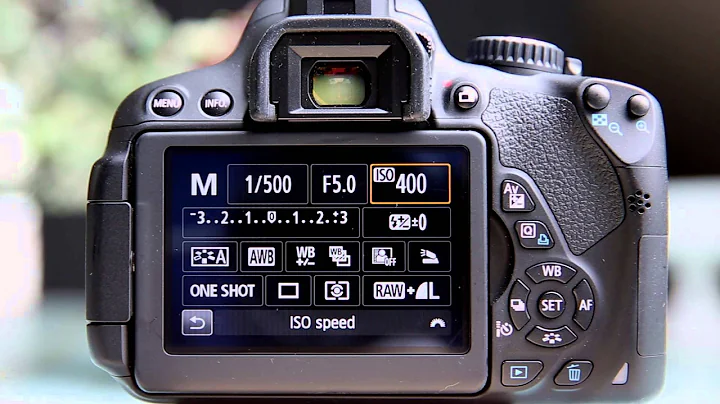Posted on June 23, 2022 John Tunney

Many people think that aperture, speed and depth of field are important. These are certainly important, but many people overlook the key factor of the guidance line. This is an important source of the appeal and impact of the photo.
"You don't take pictures, you take them yourself," Ansel Adams once said. Good point, but let’s take it a step further. The important thing to remember is that a photo is just a picture, and a picture is made up of lines.
As photographers, we use line to create visual points of interest and draw attention to things through pattern, rhythm and flow. Learning to see lines in your work and use them is a big step from "taking pictures" to "photography".
The most important line in photography is the leading line. A leading line is a line in a composition that leads the viewer's eye from one part of the frame to another. It is often used to point to a subject or area of interest in the frame, and it is a very effective tool for controlling how the viewer reads the image.


How Leading Lines Work
Leading lines are used in all types of photography to guide the viewer and organize the frame. You can see them in landscape, astronomy, sports, wildlife, architecture, photojournalism, portraits and every other genre. The path to the house is a leading line. A fence across a field that draws you to the barn, cows, or wherever else is also a leading line.
Other examples include a trail or route, a power line, an arm, a leg, a reflection, ripples in the water, a flock of birds, a line of people, a car, a coastline, waves, a river or stream, rocks, the horizon, mountains, footprints... the list could go on. .

Leading lines can be text lines like roads, or they can be an arrangement of individual elements, such as the galaxy in this photo, pointing to a subject.
How to find the leading line
As mentioned before, almost anything can be used as a leading line. It doesn't have to be an obvious continuous line like a road. It could be a series of rocks, flowers, or even a galaxy etc. The trick is not to think of these things as rocks or flowers or stars, but to think of them as lines and have them point to something.

The photographer in this image uses the pier as a leading line to draw the viewer's attention into the frame and towards the sun.
The great Impressionist artist Claude Monet has some helpful advice in this regard. "To see, we have to forget the name of the thing we are looking at," he said. I don't know if he actually said that, but if he didn't, someone should. This is great advice for "seeing" composition and "making" rather than taking photos. So forget about the names of things for a moment and think of everything as design elements when composing your shot.

Guide lines are usually used to point to the subject in the image. In this case, the sand path is the guiding line to father and son.
The LCD screen on the back of your phone or camera can help shift your thinking so you see things this way. The screen compresses the scene into two dimensions, which makes it easier to see things as pictures with lines rather than objects with names.
Technically speaking, a leading line should point to something, leading you somewhere. But, like any so-called "rule," it's just a guideline and you don't have to be crazy about it. The "something" the line points to doesn't always have to be emphasized. Sometimes the destination feels more like a hint than a big bang.
For example, something as simple as a beautiful beam of light can be enough to create a sense of destination for a route. Look at the picture above. The dirt road leads to nowhere. It just disappeared into the woods. So I used Lightroom's radial gradient and mask to lighten the background areas.It helps draw the eye through imagery and create a sense of place. There was a feeling that there was something there. We don't know what it is exactly, but that's okay. Sometimes it helps to leave something to the viewer’s imagination. Let them complete the image.

The leading line should take you to some kind of destination. Lightening the ends of your lines, as you did in this image, can help create or emphasize destinations, giving them more pop.
Defining Moment
Or let's say you find a great leading line but nothing happens on either end. You can learn Bresson 's method of waiting for the decisive moment . In other words, set yourself up on one end of the leading line and wait for something to happen on the other end.
In the picture above, I like the pattern created by the lines of buoys in the water. It's funny, but it's just lying there. Then I saw a swan coming towards me. I watched and waited until the swan hit the shutter button at the end of the row.

Sometimes you have to wait for the target to appear. The buoys in the water looked interesting, but I had to wait for the swans to swim by to complete the photo.
Editing Leading Lines
Sometimes it can help with a photo if you add emphasis to your leading lines. For example, if you have a trail somewhere, use Lightroom's adjustment brush (or whatever tool your software has) to lighten the line a little. Just don't overdo it. You want it to be a fairly subtle adjustment, just enough to make the lines stand out a little and catch the viewer's eye. There are always exceptions for
. Sometimes you might want the line to yell "I'm here!" If that's the case, turn up the brightness. However, less is more.

Use the adjustment brush or other editing tools to highlight leading lines to make them stronger and easier for your audience to see and follow.
Make your own guide lines
You can even use subtle brightness adjustments to guide lines if none exist. For example, suppose there is an old car in a field of grass. Use Lightroom's adjustment brush to draw a line across the field to the car. Use a soft feather edge and give it a little wiggle as you draw the lines. Then drag the Whites or Exposure slider a little to the right to make a small adjustment to the brightness, and you've created a path to the car.

You can even use brightness adjustments in post-processing to create guide lines. In the image above, I used the adjustment brush to create a line by lightening the hay.
Lines are more than just straight lines
In addition to acting as arrows pointing toward the subject, the shape of the leading line affects the emotional impact of the image. For example, diagonal lines create a dynamic sense of energy that flows through the image. Horizontal lines tend to feel static, while vertical lines may feel stiff or imposing. Curves like an S or C curve have a relaxing flow to them, while zigzags may feel more tight or tight. Thick lines can feel chunky, while thin lines can feel precise and surgical. Converging lines create a sense of distance and perspective, while diverging lines create a sense of vast space.

Diagonal lines, like the road in the first photo (left), are full of energy and a strong sense of direction. Curved lines, like the coyote footprint in the second picture (right), flow more easily.

Converging lines, like those created by sidewalks, create a sense of perspective and distance.
Sometimes a line or lines can be the star of the show, rather than just taking you somewhere. Properly framed, lines create interesting patterns and textures that can stand on their own as designs.

Lines create patterns, rhythms and textures that create interesting images whether they lead anywhere or not.
Conclusion
As photographers, the challenge we all face is turning a scene or moment into a photo. Line is a fundamental element of design and is used in a variety of visual art forms, from architecture and landscape design to sculpture, graphics, painting and photography. They are part of the visual grammar that helps images communicate. Learning to use lines will help you create more compelling compositions and move you from "taking pictures" to "photography."

The shadows of the tree branches create an interesting pattern and a converging set of leading lines that draw the viewer towards the tree and the sun.
About the author : John Tunney is a photographer and lecturer living in Cape Cod, Massachusetts. His work has been shown in solo exhibitions at the Griffin Museum of Photography and in numerous solo and group exhibitions in galleries and other exhibition centres. His book, "Four Seasons on Cape Cod," was published in 2016.


















![[EngSub] Chinese Blackwater Photographer Spends 8 Years Taking Numerous Photos of Deap-sea Creatures - DayDayNews](https://i.ytimg.com/vi/uayBTfQliGw/hq720.jpg?sqp=-oaymwEcCNAFEJQDSFXyq4qpAw4IARUAAIhCGAFwAcABBg==&rs=AOn4CLA0GUMAm50QpaJXOW6M95Lan3ilwQ)


